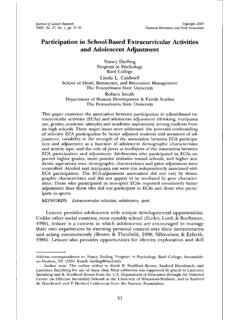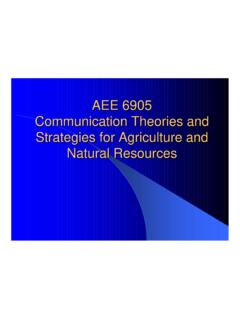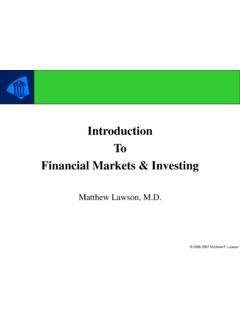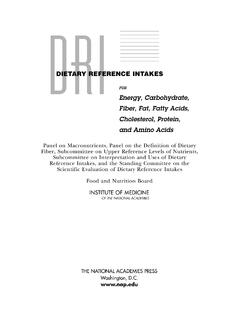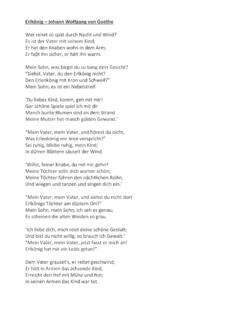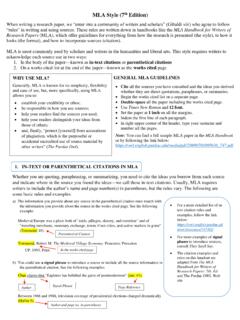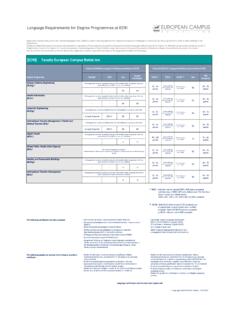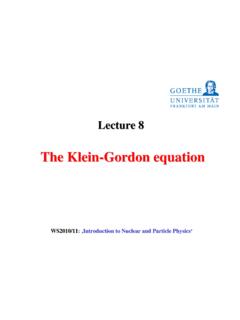Transcription of What is semantics, what is meaning - University of Florida
1 What is semantics, what is meaning Lecture 1. Hana Filip September 8, 2008 Hana Filip 1. What is semantics? Semantics is the study of the relation between form and meaning Basic observation: language relates physical phenomena (acoustic blast we produce when we speak, chalk marks on the board, etc.). to meanings How do we get from certain brute physical facts to meanings? How do we get from physics to semantics? The crucial question of linguistics: How are form and meaning systematically related in an adequate grammar of natural language? September 8, 2008 Hana Filip 2. The form- meaning link in linguistics phonetics phonology morphology syntax semantics pragmatics |_____|. SOUNDS meaning .
2 September 8, 2008 Hana Filip 3. The form- meaning link in linguistics phonetics phonology morphology syntax semantics pragmatics |_____|. SOUNDS meaning . Phonetics studies the physical side of linguistic utterances the articulation and perception of speech sounds (articulatory, acoustic and auditory). September 8, 2008 Hana Filip 4. The form- meaning link in linguistics phonetics phonology morphology syntax semantics pragmatics |_____|. SOUNDS meaning . Phonology is the study of the sound patterns of human language. Speech sounds as physical entities may be infinitely varied, but when they function as elements in a given language, as phonological units, they are highly constrained. Native speakers of any language intuitively know which sequences of speech sounds are words or could be words in their language.
3 English English-like Not English-like Czech tongue twister blue grue prst strc prst skrz krk What are the smallest meaning distinguishing units (= phonemes) in a given language? Example: cat - sat - bat - mat September 8, 2008 Hana Filip 5. The form- meaning link in linguistics phonetics phonology morphology syntax semantics pragmatics |_____|. SOUNDS meaning . Morphology is the study of the structure of words and the smallest meaning - bearing units and how they combine into words: allowable combinations of morphemes: un-able, to un-do, *un-house new word formation: to pulver-ize, to woman-ize, to google You don't get to be a verb unless you're doing something right (Nunberg on the effect of Google on our collective consciousness, 2003, in The Nation: Search Engine Society; As Google Goes, So Goes the Nation ).
4 September 8, 2008 Hana Filip 6. The form- meaning link in linguistics phonetics phonology morphology syntax semantics pragmatics |_____|. SOUNDS meaning . Syntax is the study of the formation of sentences, how words are combined to larger units than words, to phrases and sentences that are well-formed strings in a given language *portrait Rembrandt painted that a . A portrait that Rembrandt painted . September 8, 2008 Hana Filip 7. The form- meaning link in linguistics phonetics phonology morphology syntax semantics pragmatics |_____|. SOUNDS meaning . Semantics is the study of meaning expressed by elements of any language, characterizable as a symbolic system. It is the goal of linguistic semantics to describe the meaning of linguistic elements and to study the principles which allow (and exclude) the assignment of meaning to combinations of these elements.
5 A complete and an adequate semantic theory characterizes the systematic meaning relations between words and sentences of a language, and provides an account of the relations between linguistic expressions and the things that they can be used to talk about (De Swart 1998, ). September 8, 2008 Hana Filip 8. The form- meaning link in linguistics phonetics phonology morphology syntax semantics pragmatics |_____|. SOUNDS meaning . Semantics is the study of meaning expressed by elements of any language, characterizable as a symbolic system. It is the goal of linguistic semantics to describe the meaning of linguistic elements and to study the principles which allow (and exclude) the assignment of meaning to combinations of these elements.
6 A complete and an adequate semantic theory characterizes the systematic meaning relations between words and sentences of a language, and provides an account of the relations between linguistic expressions and the things that they can be used to talk about (De Swart 1998, ). September 8, 2008 Hana Filip 9. The form- meaning link in linguistics Question: How is a meaningful sentence built up from its meaningful parts all the way down to individual words? Dog bites man ordinary, expected event, barely something worthwhile reporting Man bites dog an unusual, infrequent event, which is more likely to be reported Same words man, dog, bites with the same meaning different structure leads to a different meaning of a whole sentence structure overtly manifested in the differences in word order indicates how man and dog are related to the verb bites Conclusion: The meaning of a complex expression is determined by its structure and the meanings of its constituents once we fix what the parts mean and how they are put together we have no more leeway regarding the meaning of the whole.
7 This is the PRINCIPLE OF COMPOSITIONALITY (Frege's Principle), a fundamental presupposition of most contemporary work in semantics. We cannot study meaning without structure. September 8, 2008 Hana Filip 10. The form- meaning link in linguistics We cannot study meaning without structure. There are certain aspects of structure (syntax, morphology) that may be fruitfully studied without reference to meaning (semantics). However, if we are interested in language as a means of communication, we do not want to study syntax for its own sake (De Swart 1998, ). September 8, 2008 Hana Filip 11. The form- meaning link in linguistics phonetics phonology morphology syntax semantics pragmatics |_____|.
8 SOUNDS meaning . The simplest cases of meaning are those in which the speaker says a sentence and means exactly and literally what he says. It's warm in here. More complicated cases: the speaker utters a sentence, means what he says, but also means something more. The literal meaning of a sentence and what the speaker intends to convey when he uses it, utters it, for example, then come apart in various ways It's warm in here. (i) Sentence (literal) meaning : assertion about temperature (ii) Speaker's intended meaning or utterance meaning (one among many): command Open the window, please! September 8, 2008 Hana Filip 12. The form- meaning link in linguistics Even more complicated case: An American soldier example (Searle 1965 What is a speech act?)
9 Suppose that I am an American soldier in the Second World War and that I am captured by Italian troops. And suppose also that I wish to get these troops to believe that I am a German officer in order to get them to release me. ( ) But let us suppose I don't know enough German or Italian to do that. ( ) they don't know enough German ( ) Let us suppose I know only one line of German, which I remember from a poem I had to memorize in a high school German course. Therefore I, a captured American, address my Italian captors with the following sentence: Kennst du das Land, wo die Zitronen bl hen? . This is a line from Johann Wolfgang von goethe 's novel Wilhelm Meisters Lehrjahre, which is translated as Knowest thou the land where the lemon trees bloom?
10 '. I want my captors to be deceived into thinking that what I mean is I am a German officer' , but part of what is involved in the deception is getting them to think that that is what the words which I utter mean in German.. September 8, 2008 Hana Filip 13. The form- meaning link in linguistics Kennst du das Land, wo die Zitronen bl hen? (i) Sentence meaning : Knowest thou the land where the lemon trees bloom? (ii) Speaker's intended meaning / utterance meaning : I am a German officer. However, this example does not mean that we can use ANY string of words with ANY intended meaning . Wittgenstein (in Philosophical Investigations) mentions that we cannot say it's cold here and mean it's warm here.

